UPSC Daily Current Affairs: 21st September 2024 | Current Affairs & Hindu Analysis: Daily, Weekly & Monthly PDF Download
GS3/Environment
Nagaland’s King Chilli Festival
Source: DTE
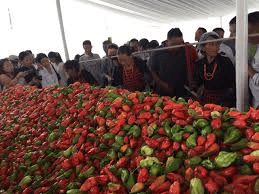
Why in News?
The village of Seiyhama in Nagaland recently hosted the third edition of the Naga King Chilli Festival, celebrating the significance of the Naga king chilli, recognized as one of the hottest chillies globally.
About Naga King Chilli
- The Naga king chilli, also referred to as Raja Mircha or Bhut Jolokia, is renowned for its extreme spiciness, with heat levels surpassing 1 million Scoville Heat Units (SHU).
- This chilli is primarily cultivated in the Northeastern Indian states, including Nagaland, Assam, Manipur, and Arunachal Pradesh.
- In 2006, it was acknowledged by the Guinness World Records as the hottest chilli in the world, a title it retained for several years.
- In 2008, it was awarded a Geographical Indication (GI) tag, which highlights its unique origin and importance in the global spice market.
- The heat range of the Naga king chilli is between 800,000 and 1,041,427 SHU, making it significantly hotter than common varieties like jalapeño, which measures only 2,500 to 8,000 SHU.
Benefits offered:
- Rich in capsaicin, the Naga king chilli is known for its pain-relieving properties and potential health benefits, including boosting metabolism, supporting heart health, and alleviating pain and inflammation.
- Traditionally, this chilli is used to preserve food in Nagaland's hot and humid conditions, extending shelf life and minimizing food waste.
Cultivation:
- The cultivation of the Naga king chilli occurs in bamboo groves, utilizing ancient farming methods.
- Farming typically begins in December or January, with peak harvest times in August and September.
- In Seiyhama village, approximately 150 households engage in the cultivation of the Naga king chilli, with an annual harvest reaching around 14,000 kg, valued at ₹70 lakh.
GS2/Polity
Supreme Court Seeks Government's Response on Delayed Judicial Appointments
Source: The Hindu

Why in News?
The Supreme Court, under the leadership of Chief Justice D.Y. Chandrachud, has called upon the government to submit a comprehensive report regarding the status of judicial appointments that the Collegium has recommended but which remain unapproved by the government. The court stressed that the Collegium is not merely a "search committee" and plays a vital role within the constitutional framework, indicating that the government should not possess absolute authority to accept or reject these recommendations. This inquiry arose while addressing a Public Interest Litigation (PIL) that sought to establish a fixed timeline for the government to act on judicial appointments proposed by the Collegium. Furthermore, the Jharkhand government submitted a contempt plea, claiming delays in the transfer of Himachal Pradesh High Court Chief Justice M.S. Ramachandra Rao to Jharkhand High Court.
Collegium System
- The Collegium system refers to the framework for appointing judges in India, which has evolved through various judicial decisions.
- It aims to maintain the independence of the judiciary from political or executive influence.
Role & responsibilities of Collegium System
- The Collegium is responsible for recommending appointments and transfers of judges in higher judiciary.
- It is composed of the Chief Justice of India (CJI) and the senior-most judges of the Supreme Court and High Courts.
Collegium system: a tug of war
- The relationship between the judiciary and the executive has been contentious, particularly concerning the Collegium system.
- The executive branch has criticized the system as lacking transparency, while judiciary leaders defend it as essential for judicial independence.
Background – Article 124 and 217 of Indian Constitution and controversy over word “Consultation”
- Article 124(2) governs the appointment of Supreme Court judges, stating that:
- Every Supreme Court judge is appointed by the President.
- The President consults with judges of the Supreme Court and High Courts as deemed necessary.
- The Chief Justice of India must be consulted for appointing a judge other than the Chief Justice of the Supreme Court.
- Article 217 covers the appointment of High Court judges, requiring consultation with the Chief Justice of India and the state's Governor.
- This constitutional provision positioned the CJI and other judges as consultants, delegating appointment decisions to the executive.
- The Supreme Court's interpretation of these articles has led to the development of the Collegium system.
Evolution -
- The Collegium system has evolved through several landmark judicial cases:
- First Judges Case (1982): The Supreme Court concluded that "consultation" does not equate to "concurrence," granting primacy to the executive.
- Second Judges Case (1993): This ruling reversed the earlier one, defining "consultation" as "concurrence," making the Chief Justice's advice binding.
- Third Judges Case (1998): It emphasized the Chief Justice's opinion in appointing judges while mandating consultation with four senior-most judges of the Supreme Court. The collegium's decisions must be documented, and if the majority opposes a candidate, that candidate cannot be appointed.
Appointment of Judges
- Supreme Court Judges: The Collegium for appointing Supreme Court judges comprises the Chief Justice of India and the four senior-most judges of the Supreme Court.
- High Court Judges: For High Court appointments, the Collegium consists of the Chief Justice of India and two senior-most judges of the Supreme Court.
- Recommended names are forwarded to the government for approval.
- The government can either approve or return recommendations for reconsideration.
- Traditionally, the government is expected to honor the Collegium's recommendations if they have been reiterated.
Transfer of Judges
- The Collegium plays a critical role in transferring judges between various High Courts.
- This process is designed to uphold judicial independence and prevent local biases among judges.
Role in Maintaining Judicial Independence
- The main objective of the Collegium system is to ensure that judicial appointments are free from political or executive influence.
- By centralizing appointment power within the judiciary, it aims to preserve the integrity and independence of the courts.
- Ongoing tensions exist between the judiciary and the executive regarding the Collegium system, with the latter labeling it as opaque.
- Despite the criticisms, many former and current Chief Justices and Supreme Court judges advocate for the system as the most effective approach for appointing judges.
- Delays in the processing of appointments and transfers, particularly when recommendations await governmental approval, have led to friction between these branches of government.
GS3/Economy
Adjusted Gross Revenue (AGR)
Source: Live Law
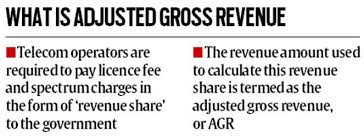 Why in News?
Why in News?
The Supreme Court has dismissed the curative petitions filed by major telecom service providers, seeking relief from the 2019 judgment regarding Adjusted Gross Revenue (AGR) dues.
What is Adjusted Gross Revenue (AGR)?
- AGR refers to the total revenue that telecom operators are required to pay, which includes all usage and licensing fees charged by the Department of Telecommunications (DoT).
- It serves as the basis for calculating various dues that telecom companies owe the government, such as:
- Spectrum Usage Charges (SUC): These charges range from 3% to 5% of AGR, depending on the spectrum holdings of the telecom company.
- License Fees: Telecom operators are obligated to pay 8% of their AGR as a license fee to the government.
Contention over AGR Calculation
- The DoT asserts that AGR should encompass all revenues earned by telecom companies, which includes non-telecom sources like deposit interest, asset sales, and dividends.
- Conversely, telecom operators argue that AGR should only cover revenues from core telecom services, excluding income from non-telecom sources such as interest and capital gains.
Legal Disputes on AGR
- Beginning of the Dispute (2005): The controversy started in 2005 when the Cellular Operators Association of India (COAI) challenged the government’s definition of AGR, focusing on whether non-telecom revenue should be included.
- TDSAT Ruling (2015): In 2015, the Telecom Disputes Settlement and Appellate Tribunal (TDSAT) ruled in favor of telecom companies, stating that AGR should only include revenue from core telecom activities and exclude non-core sources like rent and interest income.
- Supreme Court Ruling (2019): On October 24, 2019, the Supreme Court overturned the TDSAT decision, upholding DoT's definition of AGR, which includes all sources of revenue, significantly increasing financial liabilities for telecom companies due to outstanding dues.
Financial Impact of the AGR Ruling
- Massive Liabilities: Following the Supreme Court ruling, telecom companies, particularly Vodafone Idea and Bharti Airtel, faced enormous financial liabilities, resulting in unpaid dues exceeding ₹1.4 lakh crore, inclusive of penalties and interest.
- Vodafone Idea’s Crisis: Vodafone Idea was especially affected, nearing insolvency and facing uncertainty regarding its future in the Indian telecom market.
- Sector Consolidation: The financial strain from AGR liabilities has led to consolidation within the telecom sector, prompting smaller players to exit the market.
GS3/Science and Technology
Bio-RIDE Scheme
Source: The Hindu

Why in News?
The Union Cabinet has given its approval to the “Biotechnology Research Innovation and Entrepreneurship Development (Bio-RIDE) scheme” aimed at fostering advanced research and development in the field of biotechnology.
About Bio-RIDE Scheme
- Details
- Objective: To promote bio-entrepreneurship and bio-manufacturing.
- Total Outlay: ₹9,197 crore designated for the 15th Finance Commission period (2021-22 to 2025-26).
- Components
- Merges Biotechnology Research and Development (R&D) with Industrial & Entrepreneurship Development (I&ED).
- Introduces Bio-manufacturing and Bio-foundry as new elements of the program.
- Key Aims
- Fostering Innovation: Encourages bio-entrepreneurship and enhances India's standing in the biotechnology sector.
- Bridging Gaps: Aims to expedite research and product development processes.
- Implementation Focus
- Promoting Bio-Entrepreneurship: Provides seed funding, incubation, and mentorship for startups.
- Advancing Innovation: Allocates grants for research in areas such as synthetic biology, bio-pharma, and bio-plastics.
- Focus Areas
- Offers extramural funding for research in agriculture, healthcare, bioenergy, and environmental sustainability.
- Nurtures human resources in the biotechnology sector.
- Industry-Academia Collaboration
- Facilitates synergies between academic institutions and industry to speed up the commercialization of bio-based products.
- Significance
- Enhances bio-innovation and promotes sustainable development.
- Contributes to achieving global green goals and positions India as a leader in biotechnology.
GS3/Science and Technology
India's Next Dairy Milestone - Current Status and Future Aspirations
Source: Fortune India

Why in news?
Operation Flood, initiated in 1970, marked the beginning of the White Revolution, which significantly transformed India's dairy industry. To further enhance this sector, the government has unveiled plans for "White Revolution 2.0."
White Revolution 2.0 aims to enhance the milk procurement capacity of dairy cooperatives from 660 lakh kg per day in 2023-24 to 1,007 lakh kg by 2028-29. The Ministry of Cooperation's strategy emphasizes expanding the cooperative network into new regions while increasing their share within the organized dairy sector. This initiative, which builds on the foundation laid by Operation Flood, is designed to improve market accessibility for dairy farmers, create job opportunities, and empower women.
Target
The goal of White Revolution 2.0 is to elevate milk procurement by dairy cooperatives by 50% in the next five years. This will be achieved by granting market access to dairy farmers in regions currently underserved and boosting the participation of dairy cooperatives in the organized sector.
NDDB's Action Plan for White Revolution 2.0
- The National Dairy Development Board (NDDB) intends to set up 56,000 new multipurpose dairy cooperative societies (DCSs) over the next five years and to strengthen 46,000 existing societies.
- This strengthening will involve upgrading milk procurement and testing infrastructure.
- Key states targeted for new DCSs include Uttar Pradesh, Odisha, Rajasthan, and Andhra Pradesh.
Funding
The National Programme for Dairy Development (NPDD) 2.0 will be the primary funding source for White Revolution 2.0. This initiative will provide financial support to establish milk procurement systems, chilling facilities, and capacity-building programs at the village level. Additionally, Rs 40,000 will be allocated to 1,000 Multipurpose Primary Agricultural Credit Cooperative Societies (MPACSs) to enhance the infrastructure of dairy cooperatives.
Pilot project
In February 2023, the NDDB launched a pilot project worth Rs 3.8 crore to establish dairy cooperatives in uncovered gram panchayats across Haryana, Madhya Pradesh, and Karnataka. The 79 DCSs formed through this initiative now procure 15,000 liters of milk daily from approximately 2,500 farmers.
Since its establishment in 2021, the Ministry of Cooperation has prioritized the expansion of cooperative networks, particularly in the dairy sector. Currently, dairy cooperatives operate in about 70% of India's districts, with around 1.7 lakh cooperative societies functioning in 2 lakh villages, which accounts for 30% of the country's total villages. These societies procure roughly 10% of India's total milk production and 16% of the marketable surplus.
However, regional disparities exist
Despite the progress, there are significant regional disparities in dairy cooperative coverage. States like Gujarat, Kerala, and Sikkim have higher coverage, while areas such as West Bengal and the Northeast have less than 10% coverage. The government aims to address these disparities to broaden the dairy cooperative network across India.
World’s top milk producer
India holds the title of the world's largest milk producer, with production reaching 230.58 million tonnes during 2022-23. Total milk production rose from 187.75 million tonnes in 2018-19 to 230.58 million tonnes in 2022-23. However, the annual growth rate for production has declined from 6.47% to 3.83% during this period. Approximately 63% of the total milk production is marketed, while the remaining is retained by producers for their own use. About two-thirds of the marketable milk is part of the unorganized sector, with cooperatives holding a major share in the organized sector.
Average yield
The average milk yield is only 8.55 kg per animal per day for exotic or crossbred animals, and 3.44 kg per animal per day for indigenous or nondescript animals. For example, in Punjab, the yield is 13.49 kg per animal per day (for exotic/crossbred), while in West Bengal, it is only 6.30 kg per animal per day.
Per capita availability of milk
The national per capita availability of milk stands at 459 grams per day, which surpasses the global average of 323 grams per day. However, this figure varies significantly, ranging from 329 grams in Maharashtra to 1,283 grams in Punjab.
The top five milk producing states
| State | Contribution (%) |
|---|---|
| Uttar Pradesh | 15.72% |
| Rajasthan | 14.44% |
| Madhya Pradesh | 8.73% |
| Gujarat | 7.49% |
| Andhra Pradesh | 6.70% |
Contribution of milk group in the agriculture, livestock, forestry, and fishing sector
The milk group contributed nearly 40% (Rs 11.16 lakh crore) of the value of output from the agriculture, livestock, forestry, and fishing sector in 2022-23, significantly more than that of cereals. The milk group encompasses milk consumed or sold in liquid form, as well as ghee, butter, and lassi produced by farming households. The dairy sector supports the livelihoods of over 8.5 crore individuals directly or indirectly, with a significant majority being women.
GS2/Polity
Bombay HC Strikes Down Centre’s Fact Check Unit
Source: NDTV
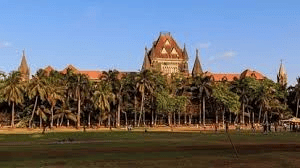
Why in News?
The Bombay High Court (HC) has declared a critical provision of the revised Information Technology (IT) Rules 2021 as unconstitutional. This provision allowed the government to identify "fake news" on social media via a "Fact Check Unit" (FCU).
Amendment of the IT Rules:
- The Ministry of Electronics and Information Technology (MEiTY) introduced the IT (Intermediary Guidelines and Digital Media Ethics Code) Amendment Rules 2023, modifying the earlier IT Rules 2021.
- Expanded Definition of "Fake News": The amendment broadened the scope of "fake news" to encompass content related to "government business."
- FCU’s Authority: If the FCU identifies or is notified about posts deemed fake or misleading regarding government affairs, it must alert the relevant social media intermediaries.
- Accountability of Online Intermediaries: These platforms must remove flagged content to maintain their legal protections regarding third-party content.
Concerns Regarding the Amendments:
- The FCU allowed the government to act as the sole judge of truth, raising significant free speech issues.
- Concerns were voiced about the extent of government regulation over speech and its implications for free expression.
Timeline of Events Leading to the FCU's Striking Down:
- The constitutional validity of the amended Rules was challenged in the Bombay HC, stating they were arbitrary and violated fundamental rights.
- The government argued that the Rules were not intended to stifle criticism or satire but to eliminate misinformation regarding government activities.
- Following a split verdict in January, the case was referred to a third judge, Justice Chandurkar, for a fresh hearing.
- During this time, the Centre announced the FCU under the Press Information Bureau (PIB), but the Supreme Court stayed this notification pending the HC's decision.
Striking Down the Rule:
- The court criticized the state's ability to label speech as true or false, equating this to censorship.
- It emphasized that citizens must have access to accurate information to engage effectively in democracy.
The Verdict Given by Justice Chandurkar:
- Violation of Fundamental Rights: The amended Rule was found to infringe upon Articles 14 (equality before the law), 19(1)(a) (freedom of speech and expression), and 19(1)(g) (right to practice a profession or trade) of the Constitution.
- Unreasonable Restrictions: The Rule imposed restrictions on fundamental rights that exceeded what is permissible under Article 19(2).
- Vague Language: The terms "fake, false or misleading" were considered imprecise, undermining the right to free speech.
- Inadequate Safeguards: The Centre's assertion that decisions by the FCU could be contested in court did not provide sufficient protection for rights.
- Chilling Effect: The Rule threatened the intermediary's safe harbor status, creating a chilling effect on free expression.
Procedural Outcome:
- Justice Chandurkar’s ruling favored the petitioners by a 2-1 majority, which will be formally presented to a division bench for final confirmation.
- An appeal to the Supreme Court is likely, as similar issues are under consideration in the Delhi and Madras High Courts, alongside other aspects of the 2021 guidelines.
GS3/Science and Technology
Pest-Control Pheromone Dispenser
Source: Nature
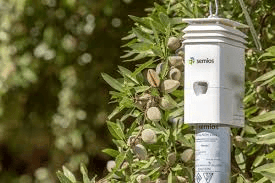
Why in News?
A new sustainable pheromone dispenser has been developed through a collaborative research project by scientists from Jawaharlal Nehru Centre for Advanced Scientific Research (JNCASR) and ICAR–National Bureau of Agricultural Insect Resources (ICAR–NBAIR).
What is the Pest-Control Pheromone Dispenser?
- Definition: A device specifically created to emit pheromones that influence pest behavior, primarily aimed at agricultural use to manage infestations and minimize crop damage.
- Developed By: This device is a result of a joint research initiative by scientists based in Bengaluru, India.
Details
- How it Works:
- It releases synthetic pheromones that imitate natural insect signals.
- This attracts pests to traps or interferes with mating cycles, thereby preventing infestations.
- Technology:
- Employs mesoporous silica matrix technology for controlled pheromone release.
- This ensures a steady release of pheromones, unaffected by external conditions such as temperature.
- Benefits:
- Cost-effective: Requires fewer replacements of pheromones, leading to lower overall costs.
- Labor-saving: Longer intervals between replacements reduce the need for labor.
- Environmentally friendly: Decreases the reliance on chemical pesticides, promoting sustainable agricultural practices.
- Increased efficacy: A stable pheromone release rate ensures effective pest management over extended durations.
- Scalability: Suitable for both small-scale farms and large industrial agricultural operations, making it highly adaptable.
GS3/Science and Technology
 |
Download the notes
UPSC Daily Current Affairs: 21st September 2024
|
Download as PDF |
Square Kilometer Array (SKA) becomes partially functional
Source: Indian Express

Why in news?
The world's largest radio telescope, the Square Kilometer Array (SKA), has successfully conducted its first observations, marking a significant achievement in its development.
About Square Kilometer Array (SKA) Project:
- Project Overview
- SKA is a global initiative aimed at constructing the largest network of radio telescopes to investigate the universe, including galaxies, dark matter, and the potential for extraterrestrial life.
- Construction Phases
- Two main phases of construction:
- SKA-Mid - Located in South Africa, it operates at higher frequency ranges.
- SKA-Low - Situated in Australia, it operates at lower frequency ranges.
- Phase 1 (SKA-Mid) commenced in December 2022, with full operational capabilities expected by 2029.
- Headquarters
- Located at Jodrell Bank Observatory in the UK.
- Site Locations
- Telescope arrays will be established in Australia (for low frequencies) and South Africa (for mid frequencies).
- Design and Features
- Comprises 197 parabolic radio antennas in South Africa.
- Includes 131,072 low-frequency antennas in Australia, designed to capture faint radio signals from vast distances.
- Global Consortium
- Involves 16 member countries, including Australia, South Africa, India, China, Japan, and several European nations.
- India's Role
- The Giant Metrewave Radio Telescope (NCRA, TIFR) is a significant partner in the project.
- The SKA India consortium, comprising over 20 institutions, is engaged in software development, signal processing, and digital hardware advancements.
- Key Technologies
- Utilizes an advanced interferometer system that employs wave interference techniques for effective data collection.
- Scientific Objectives
- Investigate galaxies at the universe's edge.
- Study the 'Dark Ages' and phenomena such as dark matter and dark energy.
- Search for extraterrestrial life forms.
- Frequency Range
- Operates within the frequency range of 50 MHz to 15.4 GHz.
- Global Collaboration
- Involves key cooperation among India, Australia, South Africa, Italy, and other nations for data generation, analysis, and antenna installation.
GS3/Economy
Govt Extends Import Management System for Electronic Devices
Source: Economic Times

Why in News?
The Union government is expected to extend the existing import management system for imports of certain IT hardware products including laptops and tablets for three months.
Background:
In November 2023, the Union Government imposed immediate restrictions on the importation of laptops, tablets, all-in-one personal computers, and ultra-small computers and servers. Following this, consultations were held to establish a new system aimed at monitoring the sources of IT hardware imports. Consequently, the Import Management System was introduced for specific categories of electronic goods.
About Import Management System:
- Import Management System (IMS) is a regulatory framework initiated by the Indian Government to oversee and streamline the importation of goods into the country.
- Primarily managed by the Directorate General of Foreign Trade (DGFT), IMS aims to enhance the efficiency of import processes, ensure compliance with regulations, and maintain the quality and safety of imported products.
Objectives of IMS:
- To protect domestic industries by regulating the influx of goods that may negatively impact local markets.
- To ensure public health, safety, and environmental protection by monitoring the import of hazardous or substandard products.
- To guarantee compliance with Indian laws and standards, ensuring the quality of goods entering the nation.
- To improve the ease of doing business by offering a transparent and streamlined import process for traders.
Key Features of IMS:
- Regulation and Control: IMS assists in monitoring and regulating imports by enforcing policies such as restrictions, quotas, and licensing for specific products.
- Licensing and Permits: Importers are required to obtain licenses or permits for restricted items, helping control the entry of sensitive goods that may affect national security, health, or the environment.
- Documentation and Compliance: The system facilitates the submission of essential documents like import licenses, bills of entry, and certificates of origin to ensure all imported goods meet Indian standards and regulations.
- Risk Management: IMS employs risk management tools to identify and screen high-risk shipments, preventing the entry of prohibited or substandard goods.
- Tariff and Non-Tariff Measures: The system implements both tariff and non-tariff measures to regulate imports, including import duties and sanitary standards that protect domestic industries and consumers.
- Facilitation of Trade: By providing guidelines and support to importers, IMS seeks to enhance the efficiency of the import process, thereby reducing both time and costs.
Reasons Behind the Introduction of Import Management System:
- China Factor: Data from the Ministry of Commerce and Industry indicates a growing dependence on China for electronic goods imports. For instance, imports of electronic goods rose from $5.3 billion in 2019-20 to $10.3 billion in 2021-22, before slightly declining to $8.7 billion in 2022-23. Increasing domestic manufacturing could help reduce reliance on China and strengthen indigenous manufacturers' global presence.
- Security Factor: Concerns regarding ‘security’ have also driven these restrictions, aiming to prevent the entry of electronic hardware that may harbor security vulnerabilities potentially threatening sensitive personal and enterprise data. Global cybersecurity issues linked to Chinese-manufactured electronics have raised significant alarms.
Govt Extends Import Management System for Electronic Devices:
The Union government plans to prolong the current import management system for IT hardware products, including laptops and tablets, by an additional three months. The current review deadline is September 30, as reported by an official source. This system oversees the importation of laptops, personal computers, and other IT hardware without causing supply disruptions. In the fiscal year 2023-24, imports of these items amounted to $8.4 billion, primarily sourced from China, against an authorization limit of approximately $9.5 billion.
The authorization permits importers to seek multiple permissions valid until September 30, 2024. On the first day of the system, over 100 applications, including those from major companies like Apple, Dell, and Lenovo, were approved, allowing imports worth nearly $10 billion. The extension aims to cover the entire current year, ensuring the stability of the supply chain.
GS3/Economy
Cabinet approves continuation of PM-AASHA to provide better prices to farmers
Source: The Hindu
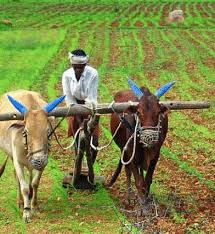
Why in News?
The government has sanctioned the continuation of the PM-AASHA scheme by allocating ₹35,000 crore. This initiative aims to guarantee that farmers receive fair prices for their crops and to manage price variations of essential goods for consumers.
What is PM-AASHA?
- Pradhan Mantri Annadata Aay Sanrakshan Abhiyan (PM-AASHA) is a comprehensive scheme launched by the Indian government in September 2018 to ensure farmers achieve profitable prices for their agricultural products.
- The scheme consolidates various existing initiatives to create a cohesive approach to price support, including:
- Price Support Scheme (PSS): Involves the physical acquisition of particular crops by central agencies.
- Price Deficiency Payment Scheme (PDPS): Provides direct financial assistance to farmers to cover the gap between the Minimum Support Price (MSP) and the market prices.
- Pilot of Private Procurement & Stockist Scheme (PPPS): Engages private entities in the procurement of crops.
- The scheme has now been extended until 2025-26 with a budget of ₹35,000 crore to improve its efficiency and outreach.
What are the implications of PM-AASHA?
- Income Security: By guaranteeing MSP, PM-AASHA is designed to stabilize farmers' earnings and shield them from market fluctuations.
- Increased Production: The promise of profitable prices is likely to motivate farmers to boost production, especially in pulses and oilseeds, sectors that have historically underperformed.
- Market Stability: The scheme aids in regulating the prices of essential goods, making them affordable for consumers while ensuring fair compensation for farmers.
- Strengthened Procurement Mechanism: The integration of various schemes under PM-AASHA enhances the overall procurement process, improving both efficiency and transparency.
What are the issues related to MSP?
- Limited Coverage: MSP primarily applies to a select few crops like wheat and rice, leaving many farmers without price guarantees for their produce.
- Inefficient Procurement Infrastructure: The current procurement systems are inadequate, causing delays and inefficiencies that hinder farmers' ability to sell their products at MSP.
- Lack of Awareness: Numerous farmers lack knowledge about their rights concerning MSP and how to effectively utilize these benefits.
- Regional Disparities: There are notable differences in MSP implementation across regions, with states like Punjab and Haryana benefiting more due to superior procurement systems, while farmers in other areas face challenges accessing these advantages.
- Market Distortions: The MSP framework can create market imbalances, incentivizing overproduction of certain crops while neglecting others.
What should be done to resolve the issues related to MSP?
- Expand MSP Coverage: The government should consider broadening MSP to include a greater variety of crops, especially those vital for food security and farmer livelihoods.
- Enhance Procurement Infrastructure: Investments should be directed towards improving procurement facilities, including storage and transportation systems, particularly in rural regions.
- Increase Awareness Campaigns: Implementing educational initiatives to inform farmers about their MSP rights and how to access these benefits would greatly empower them.
Mains PYQ:
What do you mean by Minimum Support Price (MSP)? How will MSP rescue the farmers from the low income trap?
GS3/Economy
Wide-ranging reforms undertaken in food-processing sector in last 10 years
Source: Indian Express

Why in News?
Prime Minister Narendra Modi stated on Thursday that over the past decade, India has implemented comprehensive reforms to revolutionize the food-processing sector.
What are the steps taken by Govt in food processing industry in India?
- Priority Sector Lending: In April 2015, food and agro-based processing units were recognized as agricultural activities within the Priority Sector Lending guidelines, making it easier for these businesses to access credit.
- FDI Policies: The government permits 100% Foreign Direct Investment (FDI) under the automatic route in the food processing sector, which encourages foreign investments and the transfer of technology.
- Special Food Processing Fund: A fund amounting to ₹2,000 crore was established with NABARD to support projects and infrastructure in food processing.
- Regulatory Reforms: The Food Safety and Standards Authority of India (FSSAI) transitioned from a product-by-product approval system to an ingredient-based approval system in 2016, easing compliance for businesses.
- Infrastructure Development: Initiatives like the Pradhan Mantri Kisan Sampada Yojana (PMKSY) aim to build a strong infrastructure for food processing, which includes cold storage facilities, processing units, and logistics support.
Status of food processing industries in India
- Economic Contribution: This sector contributes approximately 13% to India's total exports and 6% to industrial investment. It is anticipated to generate around 9 million jobs by 2024.
- Growth Rate: The food processing industry has been experiencing an average annual growth rate of about 11.18% in recent years, showcasing its significant expansion potential.
- Market Share: Despite being one of the largest producers of agricultural commodities, India's food processing sector accounts for only about 10% of total food production.
What are the still challenges present in food processing industry in India?
- Inadequate Infrastructure: There is a lack of cold storage and transportation facilities, resulting in over 30% post-harvest losses.
- Fragmented Supply Chains: The supply chain is highly fragmented, leading to inefficiencies and increased costs due to poor connectivity and coordination among stakeholders.
- Regulatory Complexities: The industry faces a complicated array of regulations that can obstruct business operations and compliance efforts.
- Lack of Skilled Labor: There is a notable shortage of skilled professionals in sectors like food technology and quality control, which restricts innovation and compliance with safety standards.
- Limited Technology Adoption: Many processors still use outdated technologies, which negatively impacts productivity and product quality. High costs and insufficient technical expertise further limit technological advancements.
What should be done by Govt to resolve these challenges? (Way forward)
- Infrastructure Investment: Increase investments in cold chain logistics and transportation infrastructure to reduce post-harvest losses and enhance supply chain efficiency.
- Financial Support Mechanisms: Facilitate easier access to finance through specialized loans for small and medium enterprises (SMEs) in the food processing sector.
- Skill Development Programs: Enhance vocational training initiatives that focus on food technology and safety management.
- Regulatory Simplification: Streamline the current regulations to lessen bureaucratic hurdles. A unified regulatory framework could clarify compliance requirements and create a more favorable environment for business operations.
- Promote R&D Investment: Encourage investment in research and development to stimulate innovation within the sector.
Mains PYQ:
- Elaborate the policy taken by the Government of India to meet the challenges of the food processing sector. (UPSC IAS/2019)
|
39 videos|4566 docs|979 tests
|
FAQs on UPSC Daily Current Affairs: 21st September 2024 - Current Affairs & Hindu Analysis: Daily, Weekly & Monthly
| 1. What is the significance of Nagaland’s King Chilli Festival? |  |
| 2. What are the key issues regarding delayed judicial appointments in India? |  |
| 3. What is Adjusted Gross Revenue (AGR) and its importance in India? |  |
| 4. What is the Bio-RIDE scheme and its objectives? |  |
| 5. What are the advancements and future aspirations of India's dairy industry? |  |

































